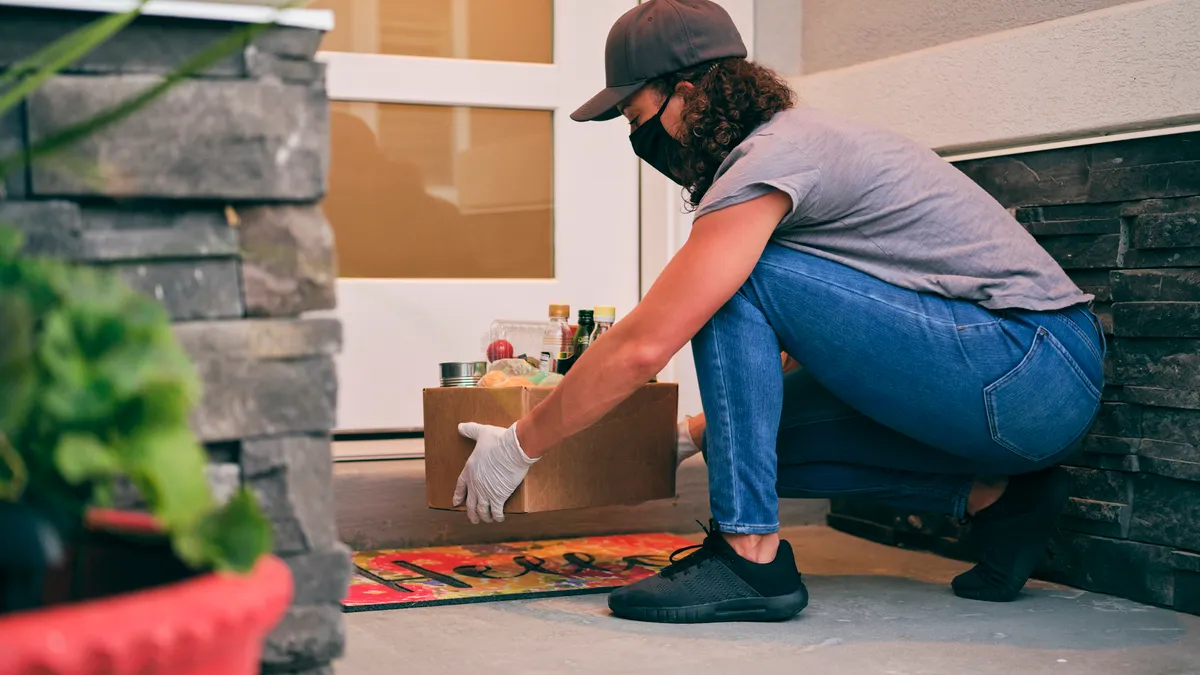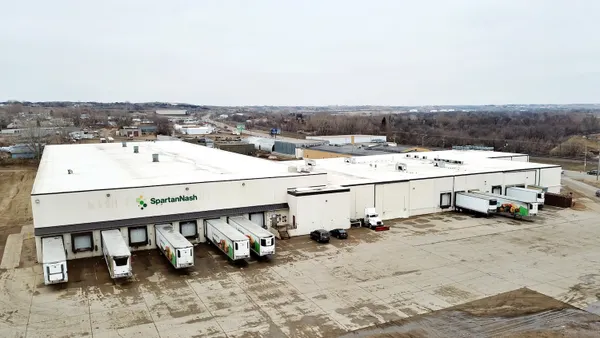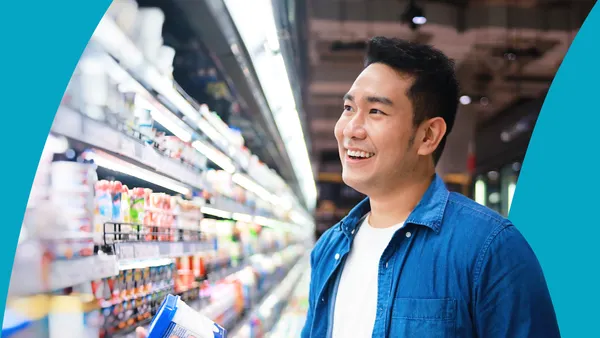Last year changed the way we work, live and interact with one another—and how we shop for food. Online ordering, for example, quickly became the new normal. In a Facebook-commissioned survey, nearly 3 in 4 US grocery buyers said they had purchased food and beverages on mobile.¹
This digital transformation was already underway, but it happened even faster than expected. Every day, grocery and CPG brands want to know: how can they adapt quickly to exceed shoppers' rapidly evolving needs?
Answers can be found by examining key shifts in consumer behavior. And so, let's look at three trends with staying power that are shaping 2021's grocery landscape.
1. Home cooks are hungry for fresh ideas
Many have expanded their kitchen skills and creativity as a result of spending more time at home. "In fact, more than half of Americans we surveyed last year said they were cooking 7 or more meals each week," said Dominique Murray, industry manager for grocery at Facebook.² "To feed this habit, consumers are seeking out more and new sources of inspiration as they fill their physical and digital shopping carts."
When it comes to inspiration for what food and beverages to buy, Facebook apps are the top digital source. In the US, 69% of people who visit Facebook weekly and 74% of people who visit Instagram weekly use the apps for food and beverage-related activities such as following brands, retailers or influencers or collecting and saving ideas.³ "To spark discovery where communities centered around food come alive," Murray suggested, "tap into engaging video solutions across Facebook apps and services. Immersive experiences like Stories can be used to reimagine recipes, showcase promotions, share videos that inspire home cooking and maximize partnerships with trusted voices like chefs or food creators."
In summary, increased home cooking means increased meal planning which drives increased demand for inspiration. And more grocery shoppers find that inspiration on digital platforms. Food and beverage are visual experiences and COVID-19 has limited consumers' ability to look at, touch and try products in store—so creating inspiring, immersive digital experiences is critical in today's environment.
2. Safety is raising expectations for convenience
Safety has become an increasingly important factor in choosing where to shop amid COVID-19, prompting many retailers to offer or expand services such as curbside pickup and contactless delivery. "But as more consumers take the digital plunge and experience new levels of convenience and efficiency," Murray explained, "they will continue to raise the bar for grocers and brands to innovate with more seamless shopping experiences."
In 2021, brands will have to work hard to make things even easier to discover, save, buy and pick up—and to let shoppers know. "The effects of COVID-19 on inventory are still being felt, so investing in long-lead media like print, catalog and direct mail can be challenging," Murray said. Grocers have seen success in making it easier for customers to discover relevant and timely products and savings using digital circulars. And given the growing demand for certain conveniences, Facebook has created new ways for advertisers to specify the delivery or collection method of a given purchase to track delivery options, create Custom Audiences and optimize ads.
3. New shopping behaviors are disrupting loyalty
Murray shared that new attitudes, new behaviors and new purchasing habits accelerated by the pandemic are disrupting consumer loyalty. According to a McKinsey survey, over 60% of global consumers surveyed said they have tried a new shopping behavior during the pandemic—such as buying from a new store, site or brand—with most planning to continue.⁴ "Brands have an opportunity to capture the attention of new loyal customers while still working hard to retain the support of existing ones," Murray said.
Facebook apps are great for building new relationships and long-term loyalty. In fact, consumers surveyed worldwide who made a repeat purchase from a website or app ranked Facebook as the most influential digital source in their decision to buy again.⁵
As retailers increase communication for 2021, Facebook can help them reach the right people at scale with personalized ad experiences through advanced targeting, customized offers and the power of machine learning. "While delivering the right customer experience will define the future of grocery, I believe that data, loyalty and mass personalization are going to drive success," she said.
Last year dramatically accelerated grocery's digital transformation. For more consumer insights and ways to inspire, capture attention and build loyalty with Facebook apps and services, visit facebook.com/business. To learn more about the these trends, please check out our webinar, The new grocery landscape.
¹ "Food & Beverage Consumer Journey Study" by Kantar Profiles (Facebook commissioned online survey of 2,257 people ages 18-64, US, 2020).
² "Industry Micro-Shifts Monthly Tracker" by Kantar Profiles (Facebook-commissioned online survey of 96,938 adults across AU, BR, CA, DE, ES, FR, HK, ID, IN, IT, JP, KR, MX, TW, UK, US), May–Aug 2020. Unless otherwise specified, data is a cross-country average across all 16 markets.
³ "Food & Beverage Consumer Journey Study" by Kantar Profiles (Facebook commissioned online survey of 2,257 people ages 18-64, US, 2020.
⁴ "Consumer Sentiment during the COVID-19 Crisis" by McKinsey, Jul 2020.
⁵ Facebook IQ Source: "Global Retail Re-emerge Study" by Ipsos (Facebook-commissioned online survey of 43,474 people ages 18+ across AU, BR, CA, DE, FR, IN, JP, MX, SK, TH, UK, US), July – August 2020.










